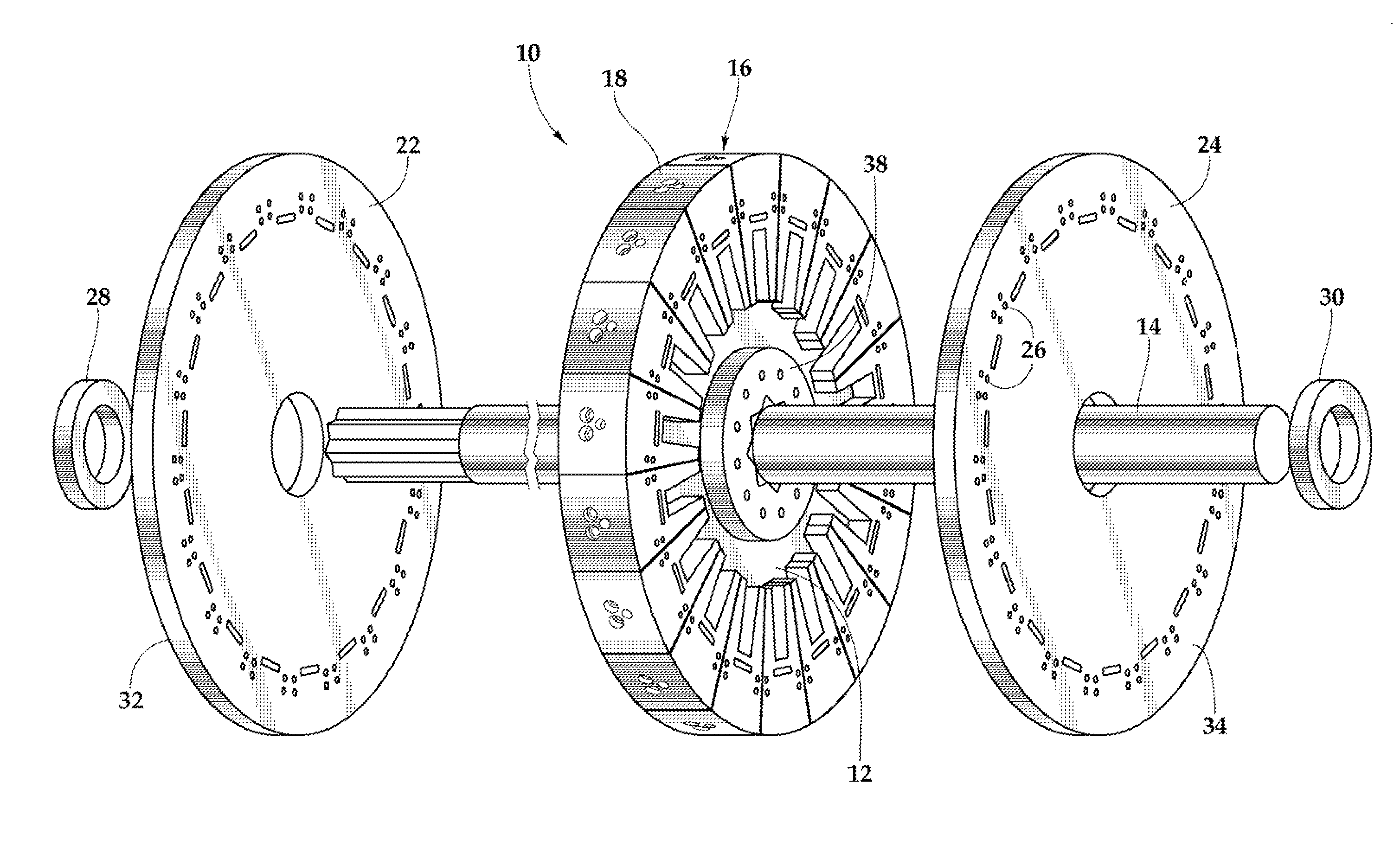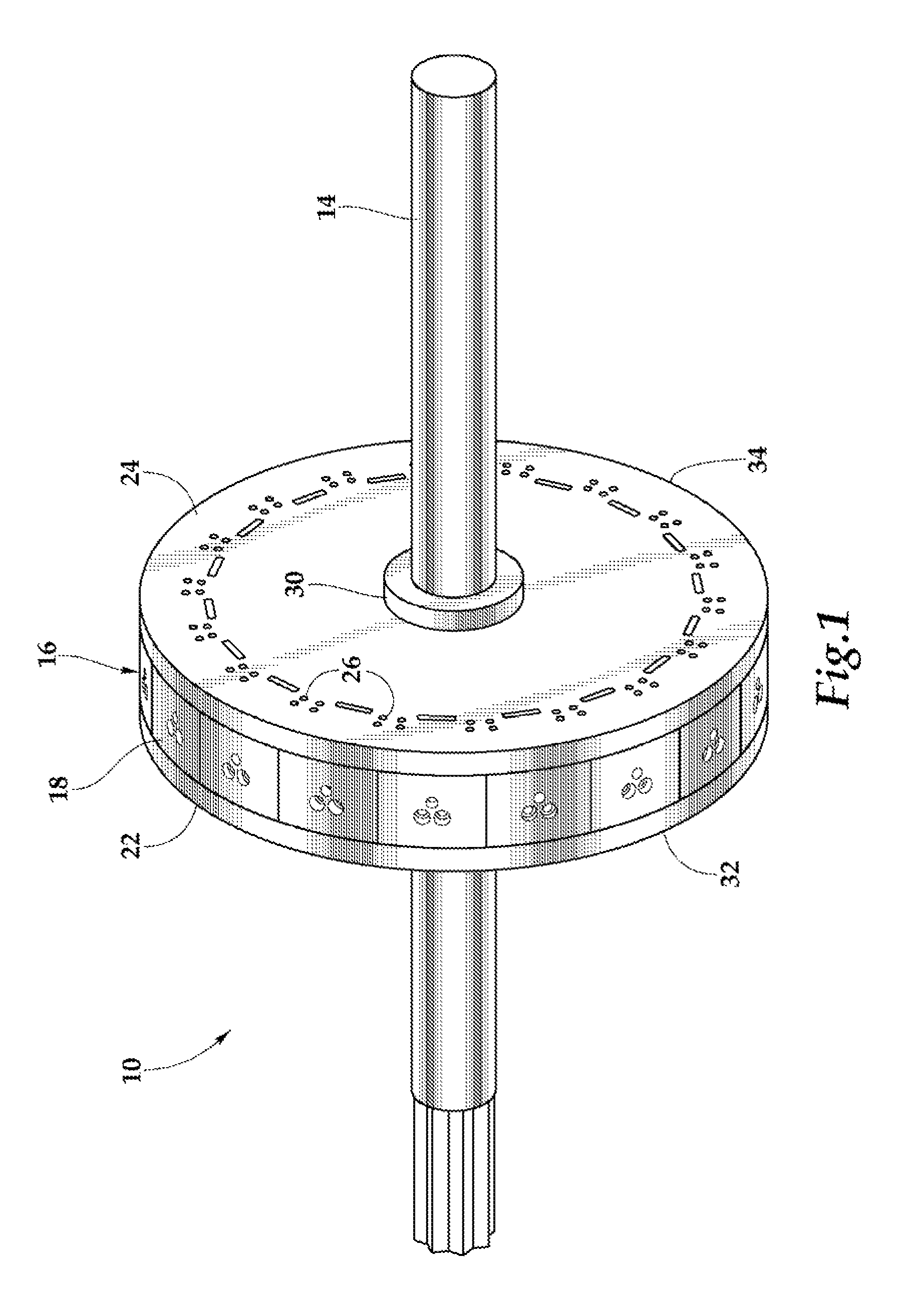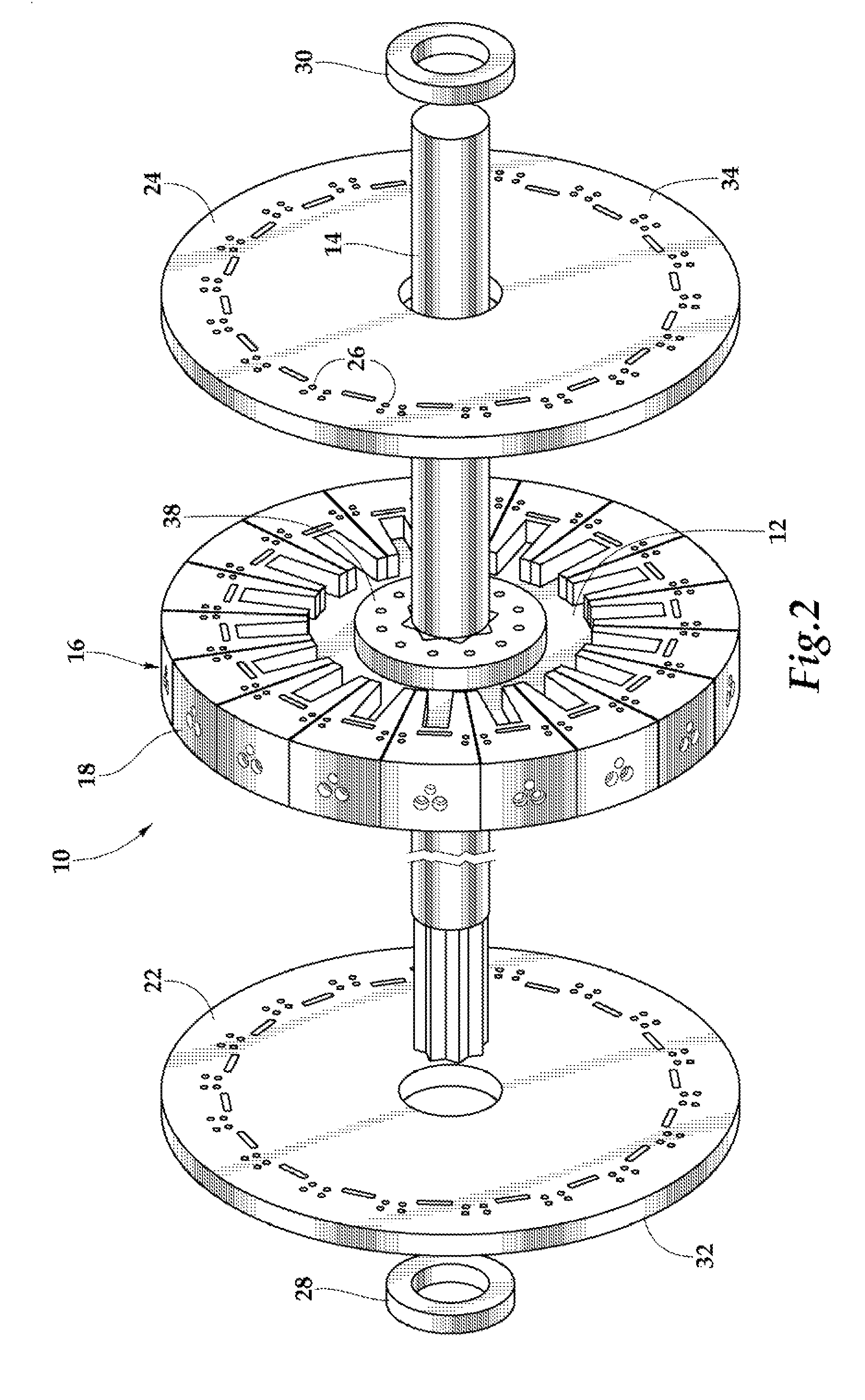Multi-piston camwheel engine
a camwheel engine and multi-piston technology, applied in the field of engines, can solve the problems low reliability, and low efficiency, and achieve the effects of low fuel economy, reliability, and efficiency
- Summary
- Abstract
- Description
- Claims
- Application Information
AI Technical Summary
Benefits of technology
Problems solved by technology
Method used
Image
Examples
Embodiment Construction
[0020]While the making and using of various embodiments of the present invention are discussed in detail below, it should be appreciated that the present invention provides many applicable inventive concepts which can be embodied in a wide variety of specific contexts. The specific embodiments discussed herein are merely illustrative of specific ways to make and use the invention, and do not delimit the scope of the present invention.
[0021]Referring initially to FIGS. 1, 2, and 3, therein one embodiment of an engine is depicted that is schematically illustrated and generally designated 10. A camwheel 12 is rotatably mounted to an output shaft 14, which may in turn be connected to any type of load. A cylinder block 16 including 18 cylinders, 18-1 through 18-18, which are collectively referenced by the number 18, is concentrically disposed about the camwheel 12. Eighteen pistons 20-1 through 20-18, which are collective cylinder-enclosed pistons 20, are respectively disposed within the...
PUM
 Login to View More
Login to View More Abstract
Description
Claims
Application Information
 Login to View More
Login to View More - R&D
- Intellectual Property
- Life Sciences
- Materials
- Tech Scout
- Unparalleled Data Quality
- Higher Quality Content
- 60% Fewer Hallucinations
Browse by: Latest US Patents, China's latest patents, Technical Efficacy Thesaurus, Application Domain, Technology Topic, Popular Technical Reports.
© 2025 PatSnap. All rights reserved.Legal|Privacy policy|Modern Slavery Act Transparency Statement|Sitemap|About US| Contact US: help@patsnap.com



